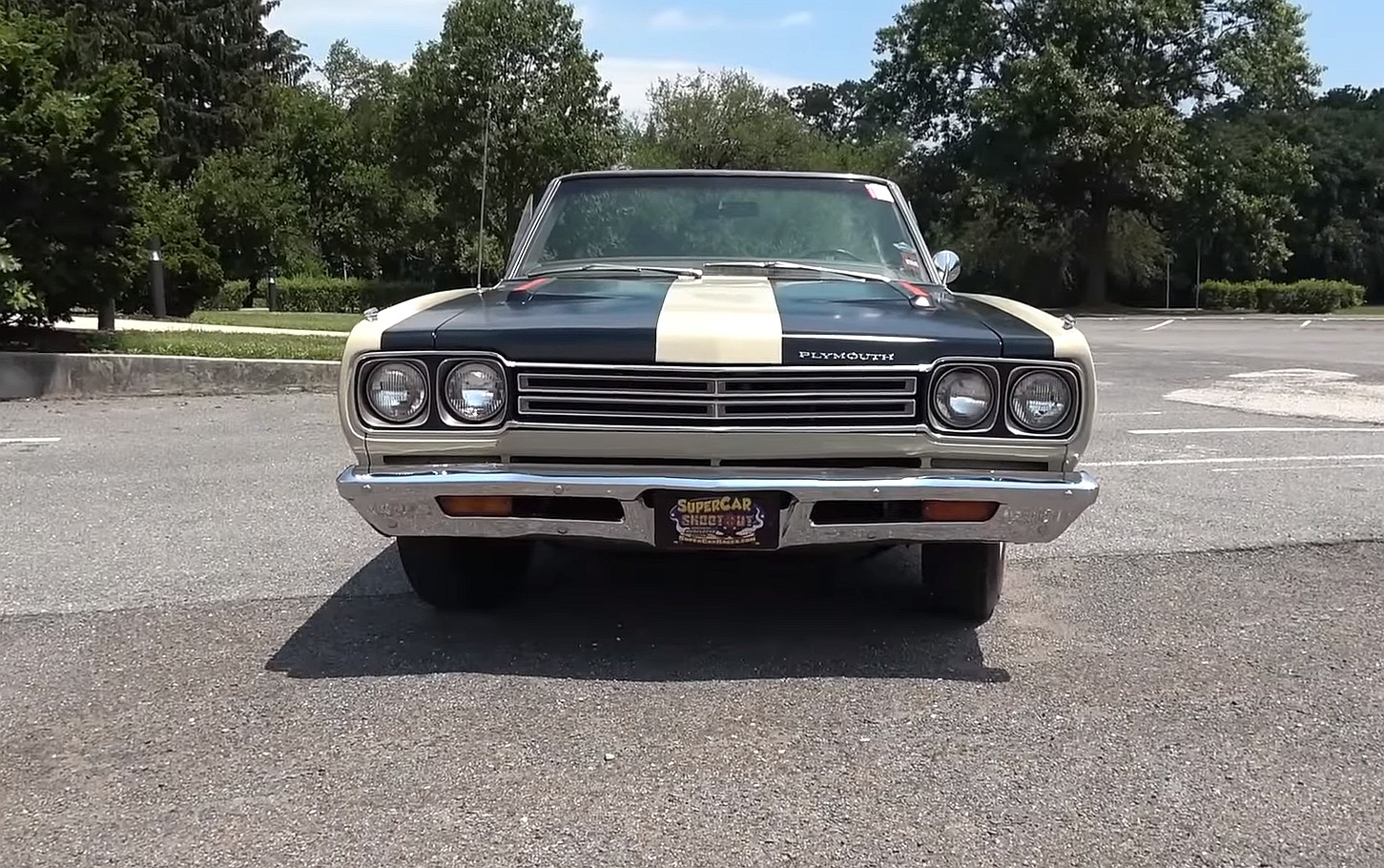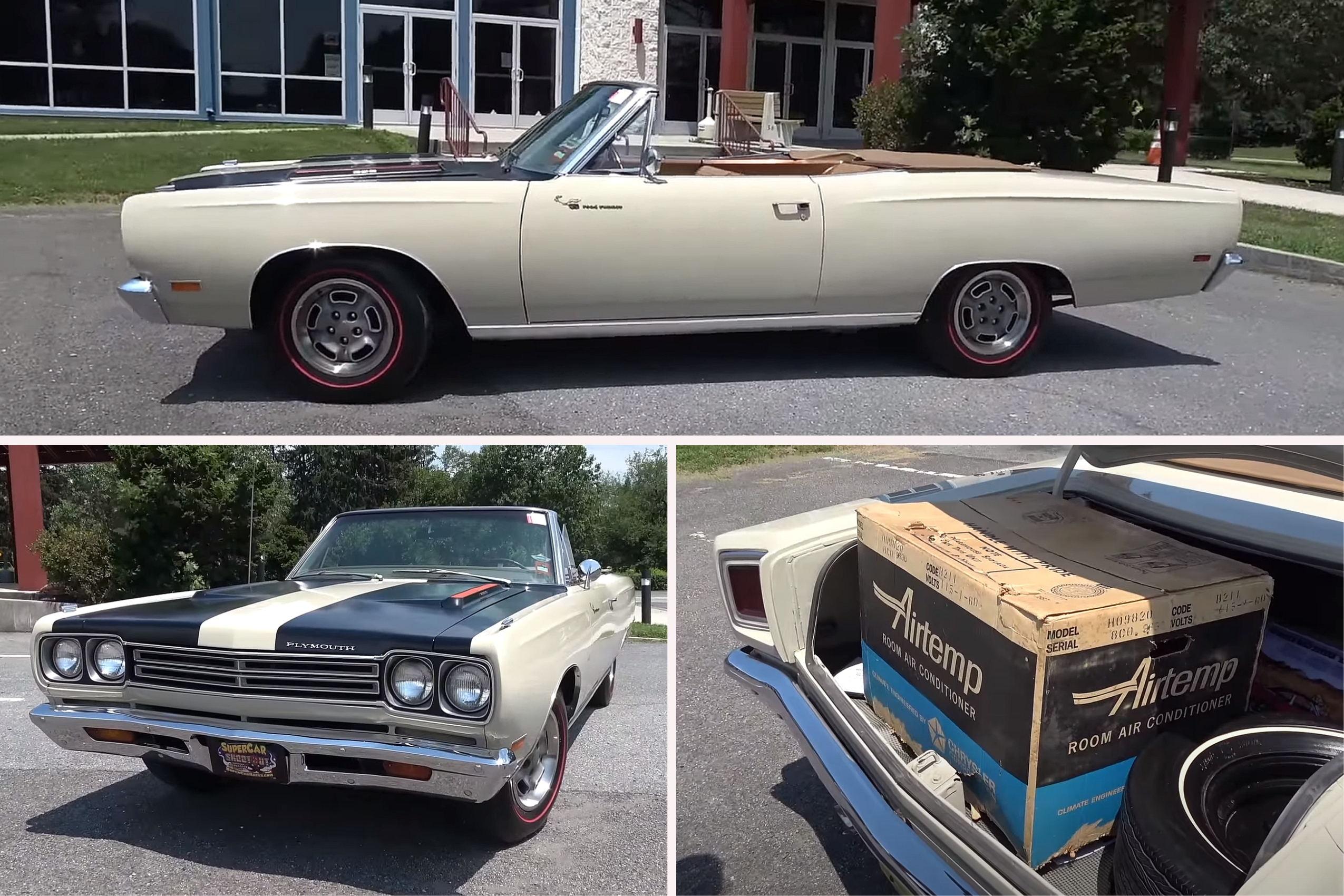Introduced in 1967 as a lower-priced alternative to the upscale GTX, the Plymouth Road Runner became the company’s most affordable entry into muscle car ownership. And it was a big hit with performance car enthusiasts, moving 44,303 units in its first year in showrooms and 81,105 examples in 1969.
Sales dwindled as the muscle car era came to an abrupt halt in 1971 but remained strong in 1970, with almost 37,000 cars delivered. And like most Mopars from the era, the Road Runner spawned quite a few gems. The 426 HEMI version is arguably the rarest and most desirable, but drop-top Road-Runners are also scarce.
You see, convertibles weren’t exactly popular at the time. In 1969, the first year when Plymouth offered a soft-topped Road Runner, only 1,890 customers went with this body style. That’s only 2.3% of total production. In 1970, the Road Runner’s second and last year with a convertible version, deliveries dropped to less than 2%, with only 658 units sold.
As a result, combing the convertible body style with the 426-cubic-inch (7.0-liter) HEMI results in the rarest Road Runner ever produced. That’s because only 13 cars left the factory with this combo in 1969 and 1970. It’s also one of the rarest Mopars ever made.
The beige drop-top you see here is not one of those super rare and expensive HEMI Road Runners, but it’s not exactly common either. Even though it’s part of the 1969 lineup that saw 1,890 convertibles leave the assembly line, the four-barrel 383-cubic-inch (6.3-liter) V8 and automatic gearbox combo makes it one of 1,111 vehicles produced.

If that’s not rare enough for you, the Sand Pebble Beige color narrows that number even more. Much like the drop-top layout, this hue wasn’t popular either. Mopar experts agree that only 1% of 1969 Road Runners were ordered in this finish, so we’re talking about only 800 cars and 11 convertibles. However, the owner claims his unit is the only Sand Pebble Beige drop-top known to exist. The 1-of-1 claim makes sense if we also consider the two-door brown interior and the optional Light Package.
But even if it’s not a unique build, this Road Runner is one stunning piece of classic muscle car history. Not only restored to an impressive and factory-correct finish, but it’s also a numbers-matching gem when it comes to drivetrain and body panels. That’s something you don’t see every day.
What about that surprise hidden in the trunk? Well, it’s not a rare jack kit or some unique feature. It’s not even related to the car, but it’s yet another item you don’t see every day. I’m talking about an Imperial Airtemp air conditioning system. Built by Chrysler, the through-the-window unit is also all original and still has the original cardboard box from 1968.
If you’re unfamiliar with Airtemp, this company came to be in the 1930s when Walter P. Chrysler decided that contemporary AC equipment was too bulky and expensive for the then-new Chrysler Building. He commissioned a team of Chrysler engineers to find a better solution, and the Airtemp Corporation was created in 1934.
Airtemp quickly became America’s leading AC manufacturer and led the industry until the early 1970s. As other companies began making more affordable units, Airtemp lost money, and Chrysler sold the venture to Fedders in 1976. The plant was closed only one month later and sold to General Motors, which turned it into a Corvette facility.
